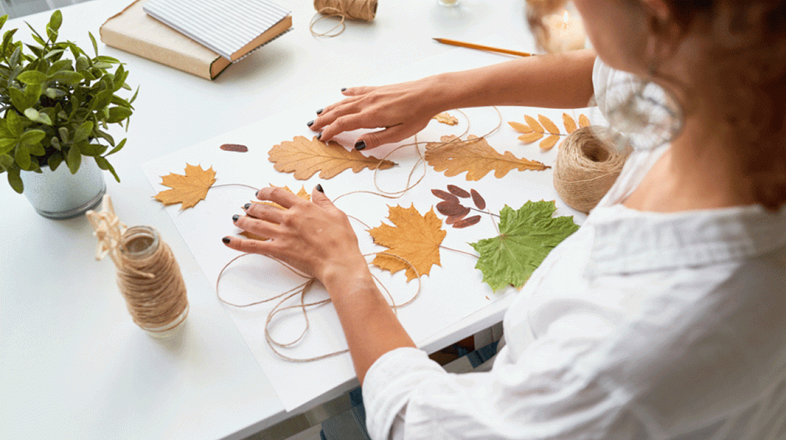Pappedeckel, also known as cardboard crafting, is more than just cutting and gluing pieces of recycled material. It is a sustainable and imaginative form of art that transforms everyday materials into expressive, functional, and decorative pieces. From detailed sculptures to practical home decor, Pappedeckel offers limitless opportunities for creators at every skill level.
If you’re just starting your journey into this fascinating craft, this guide will walk you through everything you need to know — from essential tools and techniques to creative project ideas.
What is Pappedeckel?
Pappedeckel is the German term for cardboard or chipboard, and in the crafting world, it represents a style of creative expression that involves shaping and assembling cardboard into various forms.
This form of upcycling not only promotes eco-conscious creativity but also nurtures problem-solving skills and design thinking. Artists use Pappedeckel to construct models, wall art, toys, organizers, furniture prototypes, and more — all from something you might typically throw away.
Why Choose Pappedeckel as a Hobby?
1. Eco-Friendly and Sustainable
Pappedeckel encourages the reuse of cardboard that would otherwise end up in landfills. It’s an art form rooted in sustainability and environmental consciousness.
2. Budget-Friendly
You don’t need to spend a fortune to get started. Most materials — like cardboard, glue, and scissors — are readily available at home.
3. Unlimited Creative Freedom
There are no rules in Pappedeckel art. You can experiment with shapes, textures, layers, and even combine it with other media like fabric, paint, or natural elements.
4. Therapeutic and Mindful
Cutting, assembling, and crafting with your hands helps you relax and focus, making Pappedeckel a great way to unwind and relieve stress.
Essential Tools and Materials for Pappedeckel
Before diving into your first project, gather some basic supplies:
Basic Tools:
- Cutting knife/X-Acto knife: For precision cutting.
- Cutting mat: Protects your surfaces and helps with clean cuts.
- Ruler and pencil: For accurate measurements and markings.
- Hot glue gun or craft glue: For strong and fast adhesion.
- Clamps or clips: To hold pieces together as they dry.
- Scissors: For more detailed or curved cuts.
Materials:
- Corrugated cardboard: Common boxes are perfect.
- Chipboard or paperboard: From cereal boxes or packaging.
- Paper tape or masking tape: Useful for temporary holds.
- Acrylic paints, markers, or varnish: For decoration and sealing.
Fundamental Pappedeckel Techniques for Beginners
1. Scoring and Folding
Instead of bending cardboard and risking cracks, score it lightly with a knife to guide smooth folds. This is particularly useful for creating clean angles or 3D structures.
2. Layering
Build up thickness and strength by layering multiple pieces of cardboard. This technique is often used for wall art or base structures.
3. Slotting
Create interlocking tabs or slots to connect pieces without glue. This is ideal for modular or flat-pack designs.
4. Reinforcing
Use strips of extra cardboard as support beams or braces, especially for items that need to hold weight, like organizers or small furniture prototypes.
5. Sanding Edges
Use fine-grit sandpaper to smooth out rough edges or curves. This makes the final product look more polished and professional.
Beginner-Friendly Pappedeckel Project Ideas
Looking for inspiration? Here are a few fun and easy projects to try:
1. Wall Art or 3D Mural
Cut out geometric shapes, animals, or abstract designs and glue them onto a base layer for a striking piece of eco-art.
2. Desk Organizer
Use compartments and dividers made from cardboard to create a custom pen or accessory holder.
3. Miniature Models
Whether it’s a cardboard house, car, or even robot, building miniatures is an excellent way to practice precision and design.
4. Letter Art
Cut out large cardboard letters, decorate them with paint or fabric, and hang them on your wall for personalized décor.
5. Gift Boxes or Packaging
Custom-made packaging with a creative flair — great for special gifts and eco-friendly wrapping.
Tips for Success in Your Pappedeckel Projects
✅ Plan Before You Cut
Sketch out your ideas and measurements. Improvising can be fun, but planning helps avoid mistakes and wasted materials.
✅ Start Small
Begin with simple, small-scale projects to build confidence and learn basic techniques.
✅ Practice Clean Cuts
Sharp blades and slow, deliberate motions result in cleaner lines and better-fitted pieces.
✅ Be Patient
Drying glue, layering materials, and building structural integrity all take time. Don’t rush the process.
✅ Use Templates
Online templates or printable stencils can help you achieve more intricate designs without freehand drawing everything.
Advanced Techniques to Explore Later
Once you’ve mastered the basics, consider trying these more advanced approaches:
- Cardboard Sculpting: Combine cutting, scoring, and layering to form detailed 3D sculptures.
- Mixed Media: Add elements like wood, fabric, or LED lights.
- Movable Parts: Create kinetic art or working mechanisms like spinning wheels or hinges.
- Furniture Prototyping: Design small stools, shelves, or tables using structural techniques.
Final Thoughts
Whether you’re crafting a decorative wall piece or constructing a working model, Pappedeckel is a rewarding and limitless art form. It’s accessible, affordable, and environmentally friendly — making it the perfect creative outlet for beginners and experts alike.
The key to mastering Pappedeckel is experimentation. Don’t be afraid to make mistakes, test new ideas, and most importantly — have fun with the process.
So, grab your tools, collect some cardboard, and start shaping your next masterpiece.
FAQs About Pappedeckel
Q: Can kids try Pappedeckel projects?
Yes! With supervision and child-safe tools, Pappedeckel is a fantastic way for children to develop creativity and motor skills.
Q: Where can I find good-quality cardboard?
Look around your home — shipping boxes, cereal boxes, and packaging materials are perfect for starting out.
Q: Is it necessary to paint or decorate the final piece?
Not at all. Many creators love the raw, natural look of cardboard, but painting adds personality and durability.



